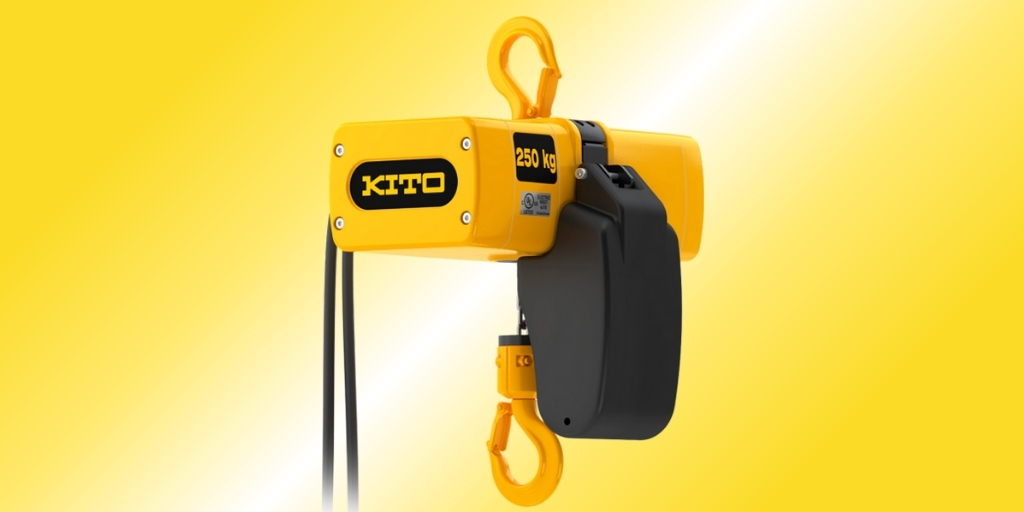
Choosing an electric chain hoist requires considering safe operation, efficiency, and protecting your investment. Appropriately matching a hoist to tasks aids in productivity while extending the life of equipment. On the other hand, poor selection can result in expensive downtime and maintenance problems along with safety hazards.
What Is an Electric Chain Hoist?
Basic Definition and How It Works
An electric chain hoist is a powered lifting tool that consists of chains or gearboxes for raising and reducing heavy loads. Its components include a compact motor assembly and durable load chain which are especially useful in manufacturing plants and warehouses. This kind of hoist makes lifting easier during tasks like maintenance or moving materials.
Key Criteria to Select an Electric Chain Hoist
Capacity: Match Load Requirements
Select a hoist rated to your heaviest load requirements of 1T up to 5T or even more. For optimum longevity and safety always select a hoist with lift capacity margin.
Lifting Height: Chain Length Matters
Different hoists have different lengths of chains, and this is designed to provide movement to elevations of varying heights. Identify the maximum lift and choose a hoist whose chain length exceeds it so that there is full range of motion without chance of overloading.
Speed: Single vs. Dual‑Speed
With single speed models, movement is much simpler and economical compared to dual-speed models which perform both fast no-load movement as well as slow precise lifting. Dual-speed models are more suited for operations where speedy lifting coupled with accurate load positioning is required.
Environment: Choose for Conditions
Consider industry-specific variants such as dusty foundries (outdoors) or food-grade humid facilities. Make sure the environment suits your conditions as well, for example; components made of stainless steel would be better in wash-down areas due to corrosive resistance while sealed motors deter dust ingress.
Trolley Options: Select the Best Fit
Hoists can be mounted on plain, geared, or motorized trolleys:
Motorized Trolleys
Enable movement from a distance or automatically; useful when long distances need repetitive lifts performed.
Hoists can be affixed to plain trolleys as well through geared or motorized ones:
Plain Trolleys
These are straightforward in design, cheap, and require minimal maintenance.
Geared Trolleys
Assist in drawing the systems into exact alignment by manipulating individual components manually. They offer precise alignment at a finer level than plain trolleys do.
Selecting the correct trolley helps eliminate strain on infrastructure while maintaining seamless material flow.
Common Mistakes to Avoid
1. Undersizing Hoist Capacity
This leads the equipment to work too hard while using too little capability thus leading it to burn out prematurely alongside overly strained parts wearing out faster than normal wear suggests
2. Ignoring Environment
Operating a standard hoist in corrosive or dusty environments shortens its lifespan.
3. Neglecting Trolley Fit
Incompatibility or misalignment can put undue stress on your crane or beam.
4. Skipping Maintenance Plans
Unpredicted failures, as well as system uptime, can be avoided with scheduled preventive maintenance.
Next Steps: Ensure Your Hoist Works for You
Choosing the correct electric chain hoist involves matching environmental conditions and trolley options with lifting height, speed, and capacity. Cut out uncertainty by consulting with specialists who understand the industrial lifting requirements.
Hoists Protech offers fully customized turnkey systems: we design, fabricate, install, test and maintain your hoists for you together with certification to CSA, CWB and RBQ standards ensuring compliance. From a compact 1-ton unit to a large 75-ton structure overhanging 125 feet, we deliver dependable equipment tailored for actual industrial applications.Need precision in lift solutions? Request a personalized quote today from Hoists Protech and make your operations safer, more efficient, and future-ready.
